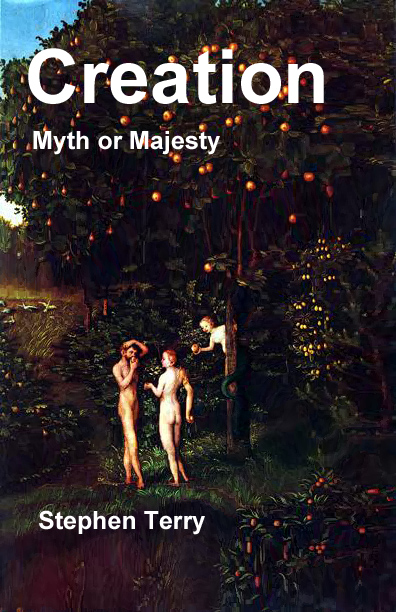
Stephen
Terry, Director

Jesus'
Message to the Seven Churches
Commentary
for the January 19, 2019 Sabbath School Lesson
 “These are the words
of him who holds the seven stars in his right hand and walks among the seven
golden lampstands.” Revelation 2:1b, NIV
“These are the words
of him who holds the seven stars in his right hand and walks among the seven
golden lampstands.” Revelation 2:1b, NIV
On the first Monday of May in 1832, Rebekkah Smith, wife
of Samuel, gave birth to her fourth child, Uriah. He was her third son, with
his next oldest sibling, Annie, who was four years older, having been the only
girl. The family was swept up by the preaching of William Miller, only to
suffer the Great Disappointment of 1844 when Jesus did not appear in the clouds
as predicted by Mr. Miller. When the proclamations of William Miller failed,
His popularity waned and many of his followers, including the Smiths drifted
away. But through the influence of James White, who in early 1852 offered her a
position with the early Adventist periodical, “The Advent Review and Sabbath
Herald,” she became involved in the resurrection of Adventism, phoenix-like,
from the ashes of the Disappointment. However, after being spurned for marriage
by the early missionary, J. N. Andrews,[i] her health deteriorated
and she succumbed to tuberculosis eight years before the Seventh-day Adventist
denomination officially came into existence. Although she did not live to see
that auspicious moment, she contributed many review articles and several hymns
still included in the present Seventh-day Adventist Hymnal. Only twenty-seven
at the time of her death, she, like many of the Adventist pioneers were
youthful leaders, filled with a spiritual fervor that built a belief into a
movement that became a denomination that endured.
However, the youngest of the Smith children, Uriah, was
to have the most impact on the emerging denomination. Embittered by the Great
Disappointment and the loss of a leg to infection, he withdrew from having
anything to do with religion, but eventually, through the efforts of some
Sabbatarian Adventists, found himself drawn back into the fold, where he held
several influential offices including editor of the Review. Perhaps his most
influence on the development of Seventh-day Adventism was the book he authored
and published in two parts, the first being the verse-by-verse commentary on
Revelation published in 1867, followed a few years later with a similar
commentary on Daniel, and revised many times prior to his death in 1903.
Although much of the book is dated with references to the Ottoman Empire, which
was the great Muslim threat of his day, the book nonetheless is an attempt at a
cohesive systematic theology of the Apocalypse, a theological perspective still
very definitive for Seventh-day Adventism today. While several denominations
lean far more toward the metaphorical understanding of much of the narrative of
Revelation, Uriah Smith saw Historicism as the handiest tool to delve into the
mysteries of the Apocalypse. This, after several generations of inculcation
with this perspective through parochial schools, Bible studies and evangelism
campaigns, has perhaps become so ingrained in the Seventh-day Adventist psyche as
to now be a proverbial “cross to die on.” This has often proven stultifying to
subsequent efforts to untangle this Gordian knot in search of more contemporary
perspectives than those offered by Mr. Smith. But just as the early pioneers,
who were not hampered by employment with denominations that might wish to
control and direct their efforts into unproductive paths that would disappear
into the theological wilderness, never to be heard from again, modernization of
our faith may require the efforts of such unencumbered individuals today as
well. So we will toss aside momentarily for this commentary the shackles of
trying to make the seven churches fit into a historical timeline even though
the temptation might be strong to follow that well-trod path for the clarity of
the direction and the ease of the journey. This does not mean that there are no
obstacles to historicism, for there are a few, and we will mention some as we
go.
First, as I noted in last week’s commentary, the number
seven is significant. It begs the question as to why the churches at Corinth,
Antioch, Jerusalem and elsewhere are left out of John’s missive. While some of
these seven were congregations begun by the Apostle Paul, some were not.
Perhaps Thyatira, for example, was the result of Paul’s encounter with Lydia of
Thyatira in Philippi, but we can only speculate because there is no biblical
record of Paul ever visiting the place. Perhaps the only common denominator for
these churches is that they were all well known to John. According to some of
the Anti-Nicene Fathers,[ii] John apparently resided
in Ephesus. Since he pledged to take care of Mary, the mother of Jesus, according
to the Johannine Gospel, church tradition holds that she eventually died and
was buried there, with some denominations also claiming that she ascended to
heaven there as well. This may be enough in itself to explain why Ephesus is
first on the list. Other than that, the order is unexplained. It may simply be
the path that John customarily took in traveling to the seven churches. This
may also explain why these seven churches were chosen and not others, for they
were the seven significant congregations closest to his home and also to his
exile on Patmos. While the number seven has significance in Jewish numerology,
perhaps referring back to the completion of Creation in seven days, it may have
no significance here that is not imposed by the perspective of the reader. That
perspective may want to see this as a number signifying a complete or perfect
scenario, but that can be self-serving for the historicist who wishes to see
this as a “complete” timeline stretching from the Ascension to the Parousia. However
without imposing artificial time periods, there is no real internal
justification in the text for doing so. If we lay aside the desires of the
historicist for a moment, we may be able to see that the attributes John
identifies in each church are just as much appropriate to be addressed in many
modern congregations as to those in the early church. Please allow me to share
some examples.
In his message to Ephesus, we can see how much John is drawn to his home church
and his pride in what she has accomplished. Her only flaw is that she tolerates
the Nicolaitans. According to early church tradition, one of the original seven
deacons, Nicolas, had a beautiful wife whom he allowed or even promoted to have
relations with other men, believing that what was done in the body did not
matter since the body would pass away. Those who accepted and practiced
immorality based on his influence became known as his followers and were
referred to by his name.[iii] Next we have the church
at Smyrna where the primary issue is Judaizers who try for a syncretism between
Christianity and Judaic legalism. Then we have Pergamum where Antipas was
martyred circa 68 C.E. by being burned alive inside a hollow sculpture of a
bull. Again we have the Nicolaitans as being a source of trouble for the
church. Thus far we have a period of sexual immorality being followed by a period
of legalism and then a return to a period of sexual immorality if we take the
historicists linear approach to these messages. Thyatira is next with reference
made to Jezebel, the poster child for the controlling woman and perhaps one who
would wrest control of the congregation through intrigue and immorality. When
we think of Jezebel, we think of her strength and determination in contrast to
her vacillating husband, Ahab.
Following these four, we have Sardis which is addressed as being pretty much
asleep at their post. Caught up in the monotony of routine, they find little
incentive to be overly alarmed or concerned about anything regarding their spiritual
condition. They are like the ten virgins who all fell asleep while waiting for
someone.[iv] One would think that this
would be the expected condition of the church just prior to the Parousia, but
instead we have Philadelphia where one again the legalistic Judaizers raise
their heads. In spite of their resurgence, the only instruction is “patience.” Finally
we come to the church that Adventists love to identify with. Of course, based
on historicism, since this is the last church, and Adventists believe they are
the final church that will go through to the Parousia, then they must be
Laodicea. Right? Unfortunately, those who feel that way may be right in a
manner they didn’t intend, because such an assumption would be characteristic
of the Laodiceans who think they have it all figured out and need nothing, not
realizing how blind they really are to their own predicament. It is historicism
that causes us to fall into this trap, a trap of our own making.
Perhaps on consideration, we can realize that the
attributes that John identifies here are common throughout Christianity in
every age and do not necessarily follow a linear historical progression. The
message to each church brings something of value to Christians in every age.
Yes, we can pretend we have it all figured out and apply arbitrary dates based
on random and inconsistent periods to a timeline in order to plot out the “truth”
about the seven churches. But then if we did that, we would feel we would deny
our need of another perspective and would actually then be Laodicea, wouldn’t
we?
